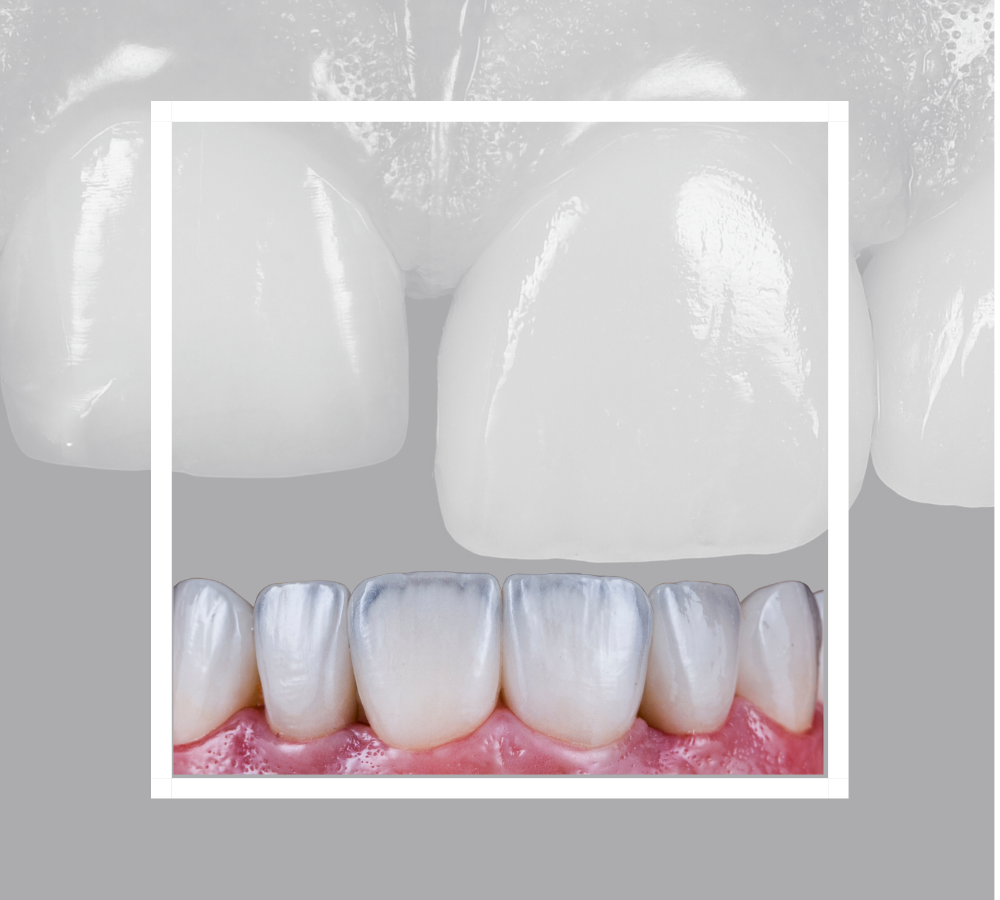
Composite Veneers / Bonding
Composite Veneers / Bonding

These fillings, which are called “composite fillings” in dentistry, are equipped with different aesthetic & durability properties according to their usage areas (front teeth, posterior teeth). With the manipulation and care of the practitioner, it bears an exact resemblance to the natural tooth. Aesthetic fillings can also be used to close the gaps between the teeth or to eliminate conditions such as crowding and surface defects in the anterior teeth.
One of the prominent treatment methods within the scope of aesthetic dentistry is bonding treatment. This method, which is used in repairing small-scale deformities or tiny fractures caused by impact, especially with small gaps between the teeth, is often preferred because of its simplicity and effectiveness. Bonding is a treatment applied by sticking the composite filling material to the needed area without any abrasion on the teeth.
According to the needs of the patient, the appropriate color of the bonding material is determined by considering the natural color of the tooth in the area to be applied. While the procedure is usually completed in a single session, it may vary from person to person and additional sessions may be needed. Bonding method has become a frequently used method among dental treatments as it offers long-lasting use.
Bonding, which means sticking or fastening as the root of the word, is one of the aesthetic dental applications that dentists frequently apply today. Bonding application is a technique used to make teeth look aesthetic. Bonding is an extremely good method that involves adding filling material in a suitable color to the teeth, without causing any damage to the teeth. With the bonding application, the person can get rid of both dental caries and tooth cavities in one day. The prices of the bonding application, which is a very fast and affordable method, vary according to the number of teeth to be treated and the size of the procedure to be performed.
The bonding method can be preferred especially to close small cracks or openings in the front part of the teeth. In addition, since it is applied by choosing colors close to the natural colors of the teeth, it can also be used to correct the color of the teeth. This method may be a suitable option for people who want to close small cracks or openings in the front of the teeth and want to achieve a more aesthetic appearance. However, to cover larger cracks or damages, methods such as laminate veneer or porcelain crown should be preferred. Bonding can also be used for situations where the teeth are too close together, the teeth are too far apart, or the teeth do not conform to their natural shape. Bonding method may be preferred to correct these situations, but it should be considered that a more comprehensive treatment may be required.
Who is Composite Bonding/Veneers Suitable for?
Bonding is a suitable treatment for closing small cracks, bruises or openings in the teeth. This method improves the appearance of the teeth and makes them more aesthetic. Bonding application can be applied to people who are not satisfied with their tooth color, deformity in their teeth, gaps between teeth and uneven tooth length.
The bonding method can be a suitable option for people who want to close cracks or openings in their teeth and want to achieve a more aesthetic appearance. However, to cover larger cracks or damages, methods such as laminate veneer or porcelain crown, which are stronger materials, should be preferred. Composite bonding application may not satisfy the patient in this sense. The permanence of the bonding method is less than other dental aesthetic methods, so it is important to continue regular dental care and examinations.
How to Apply Composite Bonding/Veneers?
In the bonding application, the teeth are cleaned first. Tooth decays are removed and roughening is done to increase the retention on the surface. Since the bonding application is to close tooth defects using a bonding agent, the rough surface is very important for the process of bonding the tooth-colored filling material to the tooth. To strengthen the adhesion, acid is applied to deepen these rough surfaces. The acid applied for a certain period of time is washed with water, dried and thus a clean, dry surface is obtained for the bonding material. After bonding is applied to this area with the help of a micro brush, it is hardened with light. After the bonding application, which is a binding agent, is applied to the teeth in this way, the aesthetic tooth appearance that the person dreams of is provided with different filling materials in different layers selected in tooth color.
The quality of the materials used by the physician in bonding application is very important. Our teeth have different colors and features from the gingiva to the tip. In addition, it consists of layers with different properties from outside to inside. For this reason, the filling materials used should be of a variety that matches the color and characteristics of these layers. In other words, the tooth is repaired with materials that can imitate dental tissues very well.
